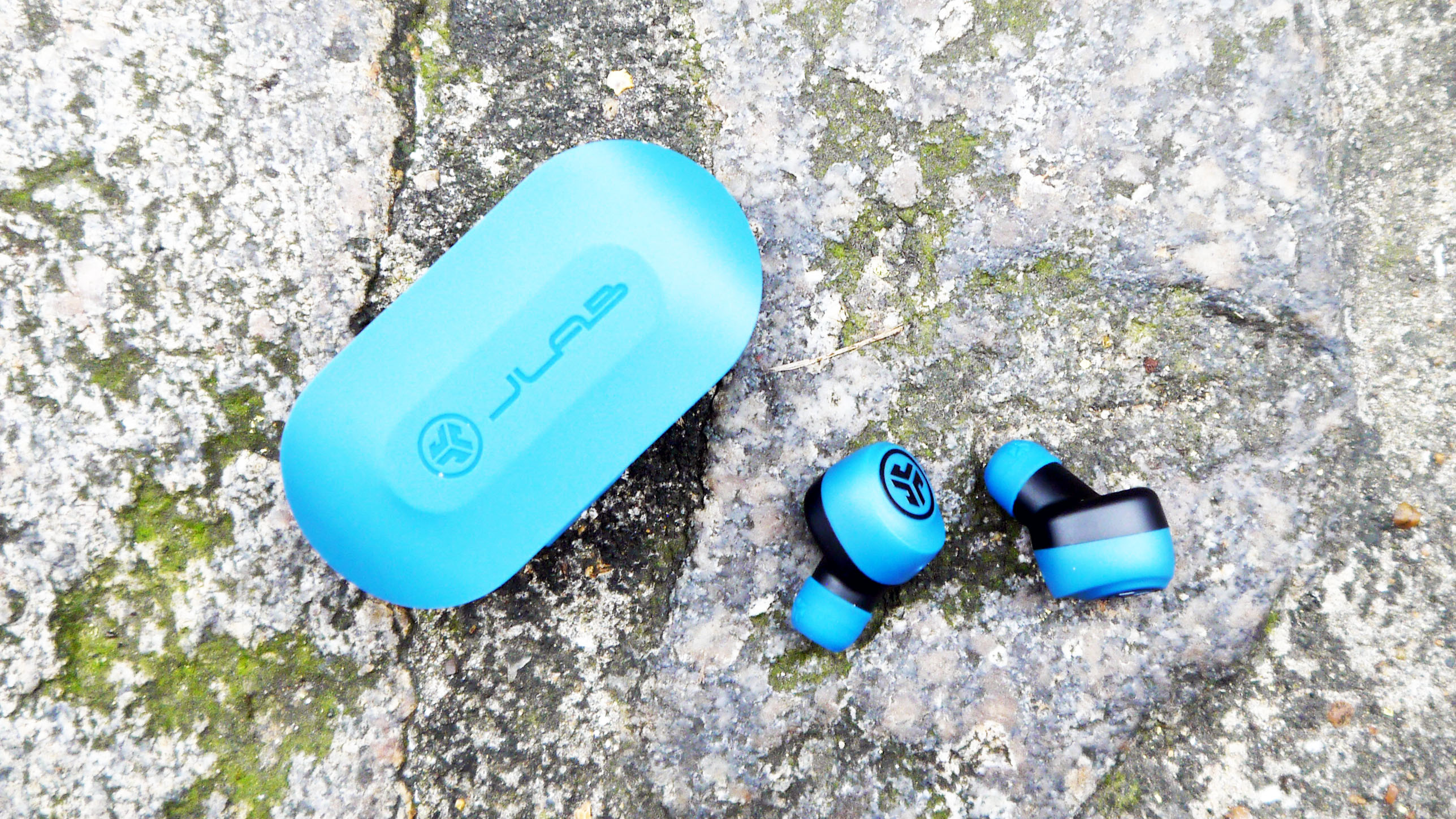TechRadar Verdict
The JLab Go Airs herald a new age of truly affordable true wireless earbuds – but you get what you pay for with these super-cheap buds. The sound quality is too poor for us to wholeheartedly recommend them, but the Go Airs are so cheap that they could make a good pair of ‘backup’ buds to stow in your bag and forget about until you forget your main pair or they run out of battery.
Pros
- +
Amazing price
- +
Good connectivity
- +
IPX5 sweatproof rating
Cons
- -
Poor audio quality
- -
Laggy when watching video
- -
Cheap-feeling
Why you can trust TechRadar
The JLab Go Air arrived right at the start of a new wave of true wireless earbuds. Since their launch, there's been an influx of super-cheap buds that actually deliver good connectivity and battery lives, despite barely costing anything.
Obviously, the sound quality of these buds isn't going to challenge the best true wireless earbuds out there, which can cost literally 10 times the price. That's really what you need to know about these earbuds – they sound pretty cheap. But they are cheap, so if this is what you want to spend – especially if you find them with 30%-50% off, as we've seen at times – then you should know that they work well.
You go in-depth with our full JLab Go Air review below, but the key conclusion is that you really do get what you pay for when it comes to buying headphones – but that's not necessarily a bad thing.
However, the JLab Go Air buds do have a big problem: the existence of a newer version. Check out our JLab Go Air Pop review for earbuds that we think sound pretty solid for music quality overall, but cost just $20 / £20.
Price and availability
The JLab Go Air True Wireless Earbuds cost just $29 / £29, and while we’re still waiting for official confirmation of pricing outside the US and UK, that works out at around AU$40.
That’s remarkably cheap for a pair of true wireless earbuds. For context, the new Go Airs are $20 cheaper than even the brand's previous budget model, the JBuds Air, which we awarded four out of five stars in our review.
However, it’s when you compare them to high-end true wireless earbuds that you get a real sense of just how cheap the new JLab buds are: the Sony WF-1000XM3 cost $230 / £220 / AU$400 at launch, so the Go Airs come in at a fraction of that price.
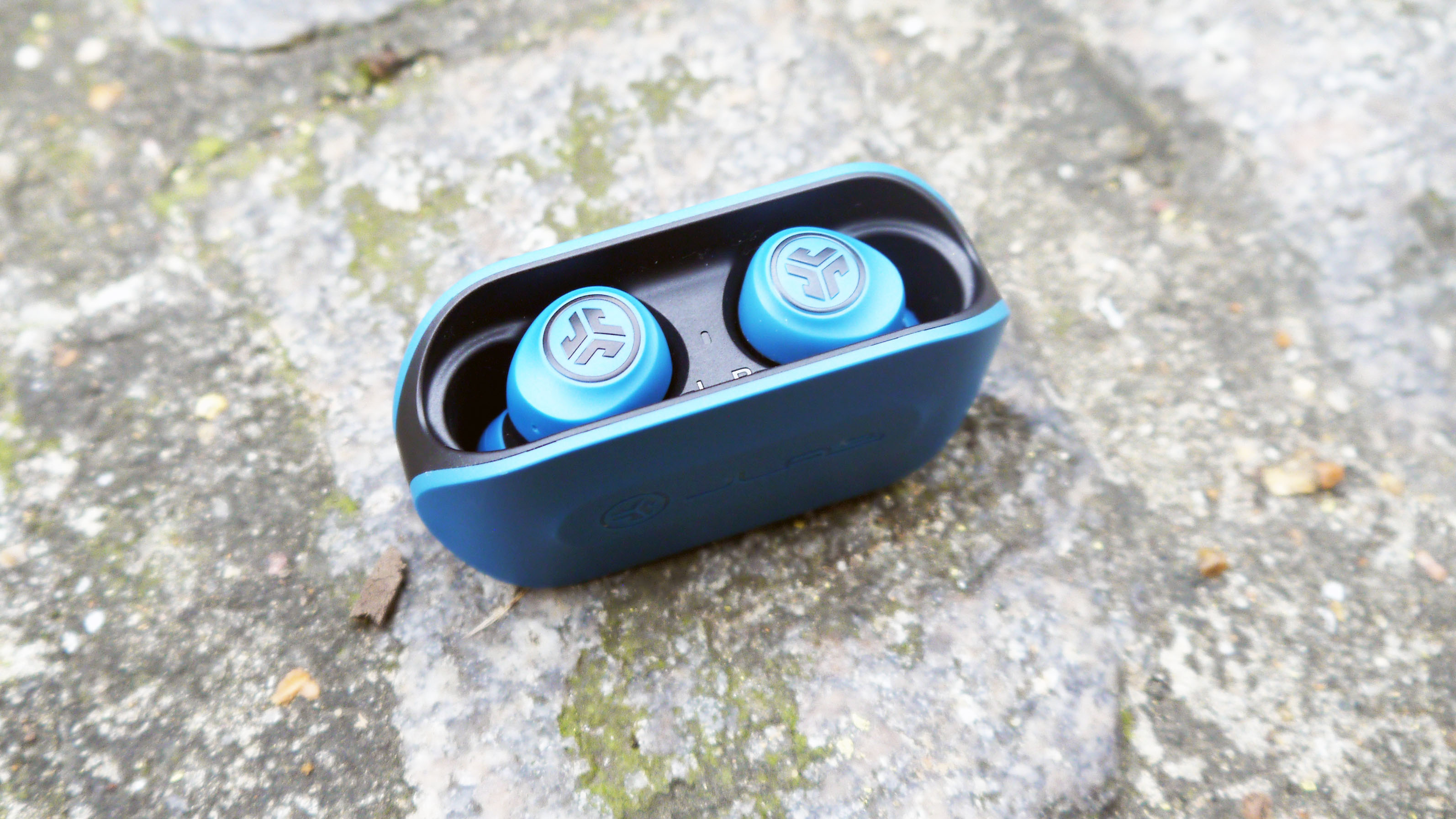
Design
Available in white, khaki green, black, and navy blue, the JLab Go Air True Wireless Earbuds sport a functional design that’s very similar to that of the JBuds Air. Like those buds, the Go Airs snap magnetically into their charging case, but a quick glance at the case gives you some idea of how JLab has managed to keep the price of these buds so low: there’s no lid, with the buds sitting exposed to the elements.
The magic of magnets means the earbuds don’t fall out of their case if you hold it upside down, and we can confirm that a vigorous jiggling won’t shake them from their housing (we can't promise the same if you decide to hurl the charging case across the room).
While the JLab Go Airs feel secure in their case, the lack of a lid does mean they’re exposed to dust or any other debris in your bag or pocket – you’ll likely need to clean these buds fairly regularly as a result.
The materials, too, hint at the low price of these earbuds, with everything feeling rather plasticky. While that’s not necessarily a bad thing (particularly when you consider that these buds have an IPX4 sweatproof rating, making them suitable for working out with), the Go Airs certainly won’t be winning any design awards.
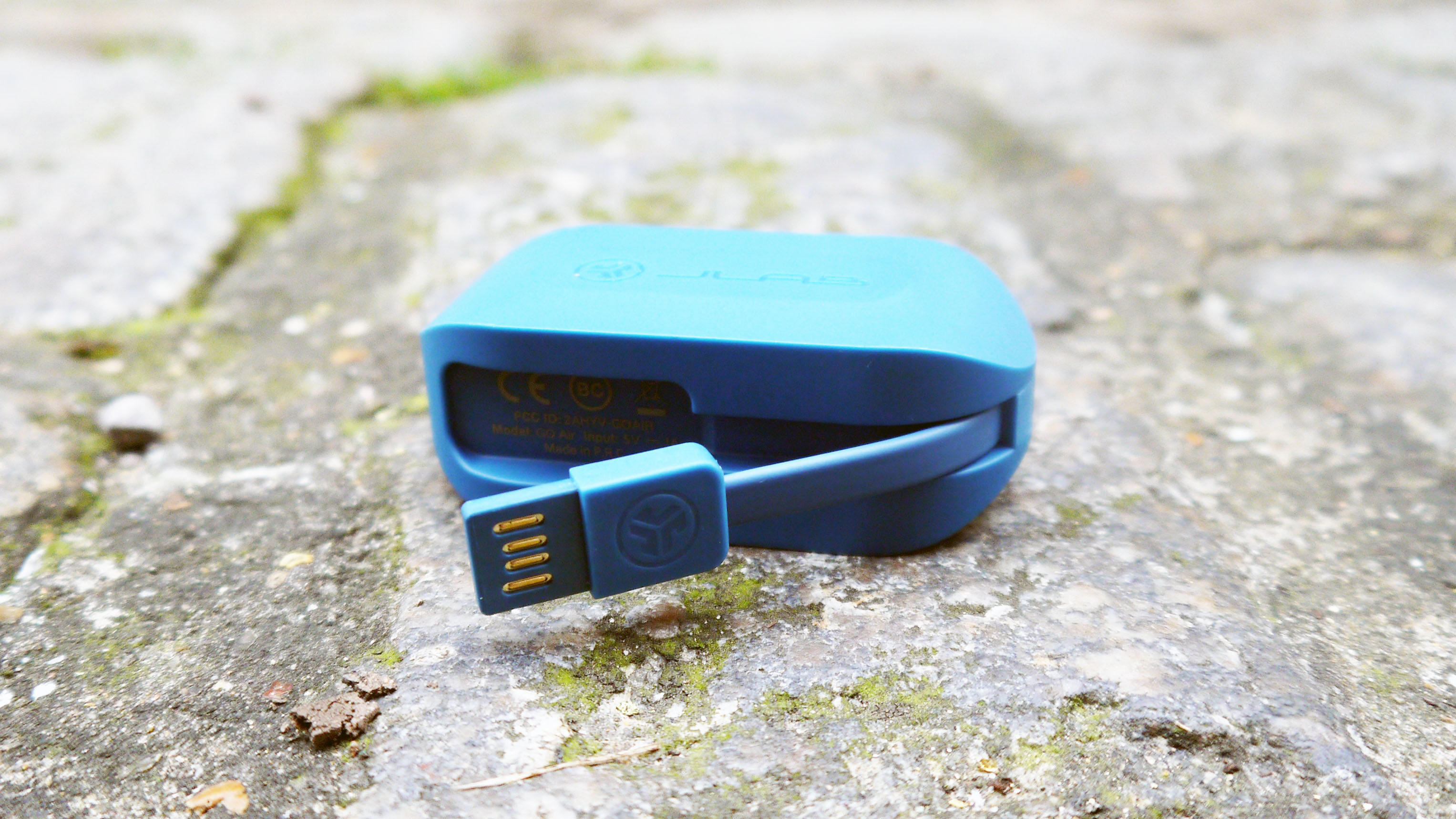
As with previous JLab models, the charging case has an integrated USB charging cable that sits in a groove on the bottom of the case; it’s a handy feature that means you won’t need to scramble for a cable every time you need to charge, but it’s worth bearing in mind that if that integrated cable breaks you won't be able to top up your charging case or your buds.
The Go Airs themselves are a lot smaller than the JBuds Air (20% smaller, to be exact), and come with three sizes of gel eartips, so you should be able to achieve a snug fit. We found them to be quite comfortable, and they felt secure enough to work out with – although the option to add ear fins wouldn’t go amiss for an extra level of security.
The outer housings of the earbuds sport the JLab logo, and this is also where you’ll find the touch-sensitive controls, which you can tap to play and pause your music, skip tracks, change the volume, and adjust the sound profile (more on that later).
You can also double-tap the left earbud to summon your phone’s voice assistant, whether you’re using Siri or Google Assistant.
We tested a pre-release pair of Go Airs for this review, and JLab tells us that the touch controls are still to be refined via a software update, which will happen ahead of their March release date.
As it is, we found the controls worked well most of the time, although they sometimes struggled to register the difference between two or three taps – we won’t hold this against them though, as this should be rectified in the coming weeks (we’ll be sure to re-test this feature to check).
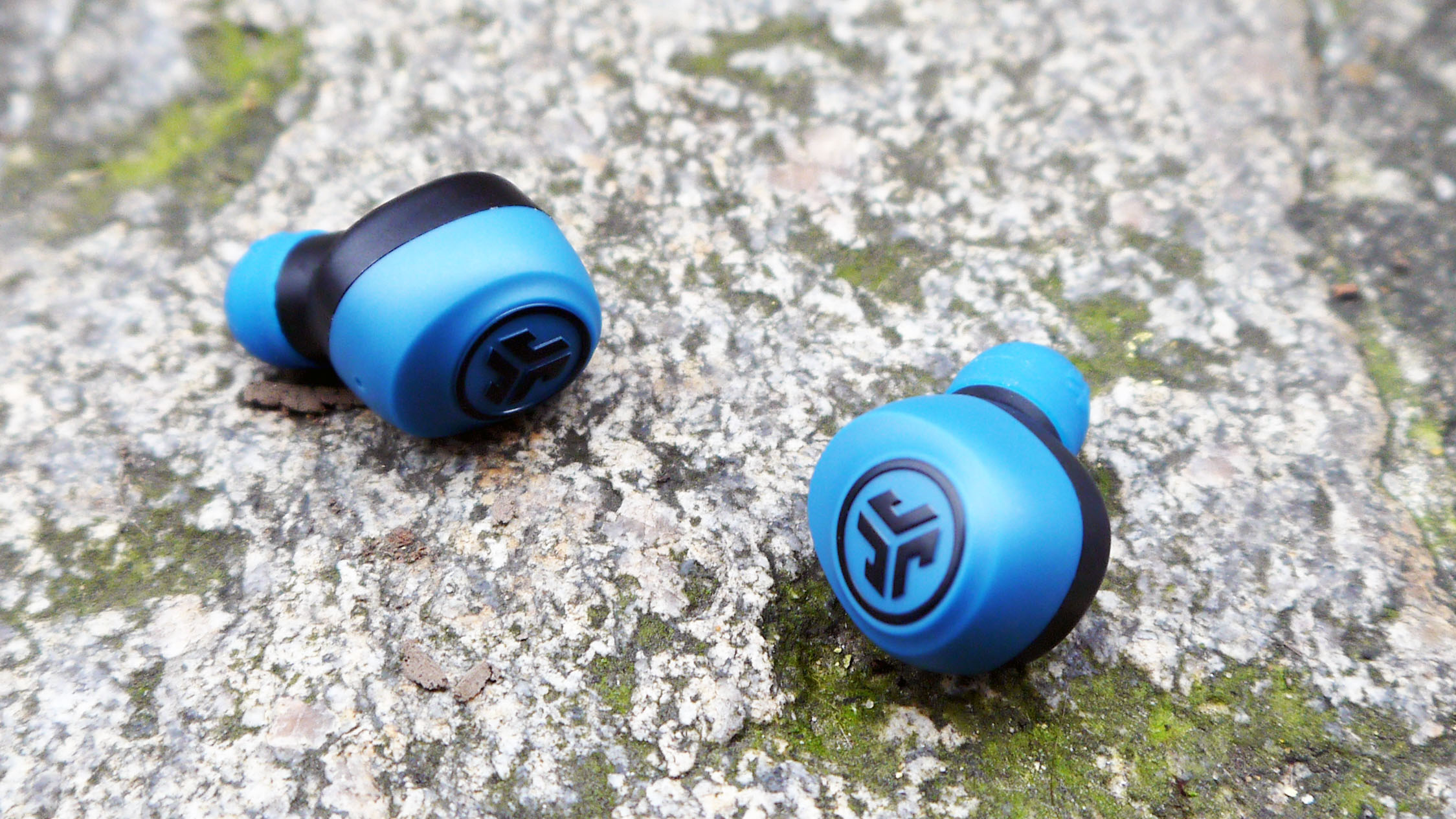
Battery life and connectivity
Again, when it comes to battery life you get what you pay for with the JLab Go Airs. You get 15 hours of battery life from the charging case, and up to five hours of playtime from the buds alone.
That’s at the lower end of the range for true wireless earbuds, although it's not much worse than the Apple AirPods, which offer about 24 hours in total. We found that the claimed battery life was about right, when listening to a mixture of music and podcasts at a medium volume.
We don’t have any complaints when it comes to connectivity, though. With support for Bluetooth 5.0, pairing is quick and efficient, and after you've paired the Go Airs with your device initially, they’ll connect automatically when you remove them from their case.
One cool feature that belies the JLab Go Airs' cheap price is the two earbuds’ ability to connect independently of each other; that means you can listen with one earbud while the other remains in the charging case, which could effectively double you battery life (if you don’t mind only listening with one ear).
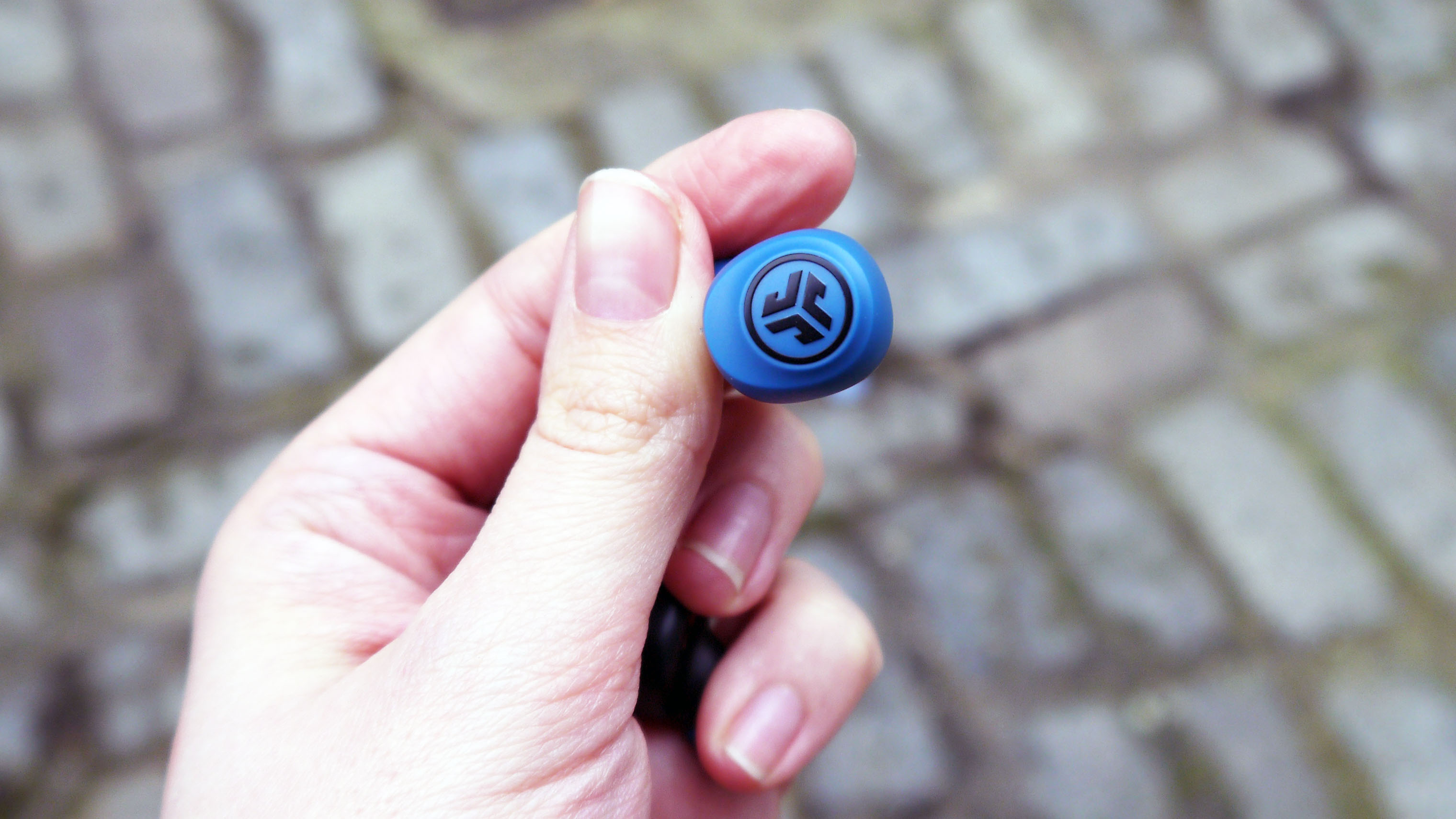
Audio quality
The sound quality of the JLab Go Air True Wireless Earbuds leaves a lot to be desired; so, while we wouldn’t expect audiophile-level fidelity at this price point, it might be worth spending a little extra if you want to do your songs justice.
Like other JLab headphones, these buds support three different equalizer presets: JLab Signature, Balanced, and Bass Boost. JLab Signature amplifies the high and low frequencies, while Bass Boost intensifies the lowest frequencies only. As you can probably guess, Balanced is designed to provide an even sound, with no particular frequency amplified above the others.
Of the three, we generally preferred to listen using the Balanced preset, finding the mids too recessed in JLab Signature, and the bass frequencies too muddy with Bass Boost.
Listening to Little Simz’ Selfish, the maverick rap vocals were prominent enough in the mix, but we found that the bass was extremely muddy, bleeding into the mid frequencies and making the track sound rather unclear.
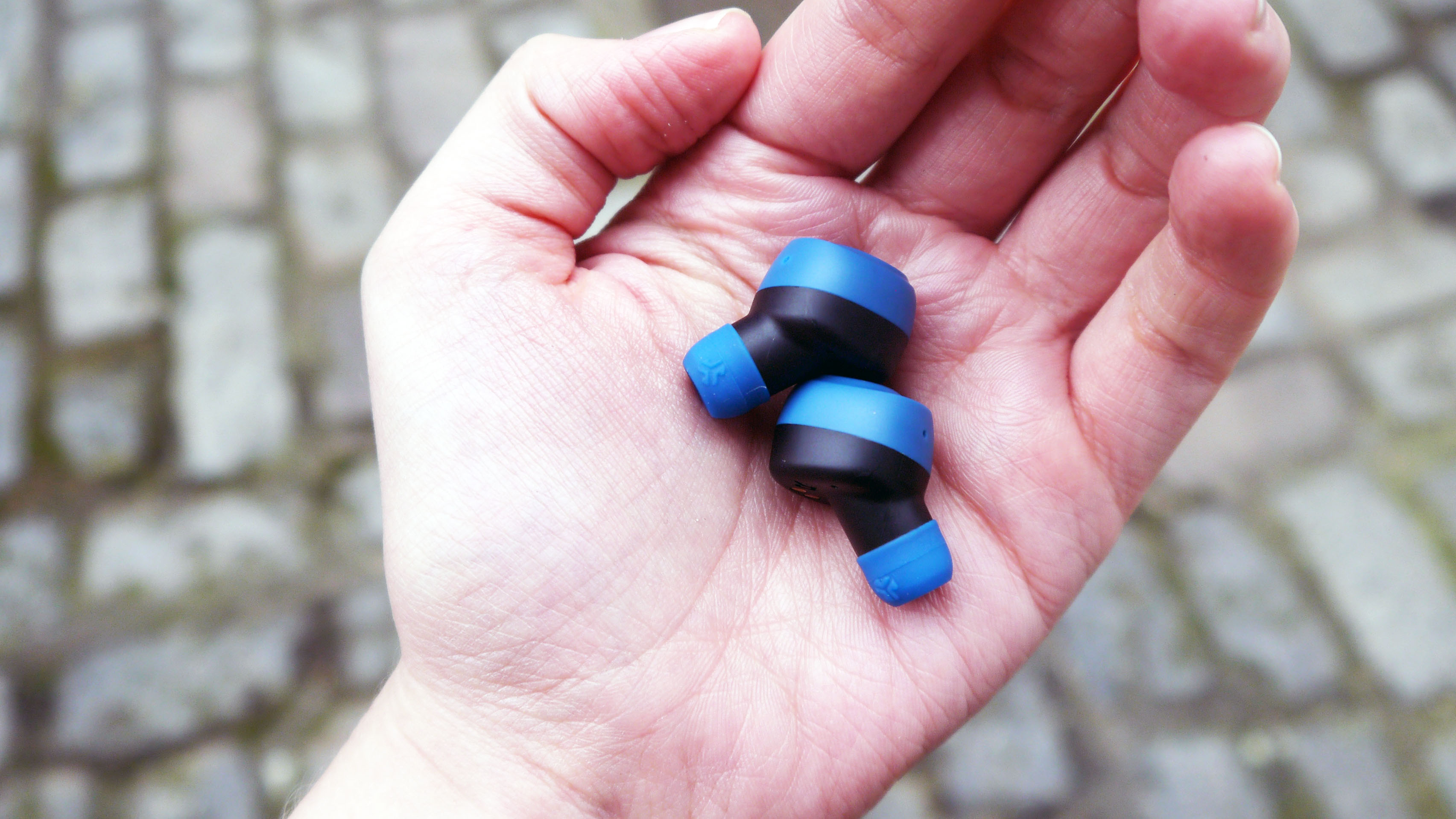
The vast string flourishes, which usually swell beautifully with the wistful backing vocals, sounded subdued and tinny, while the normally-snappy percussion sounded dull.
The lighter, airer sound of the same artists' 101 FM fared better, with a pleasant musicality in the bouncing sine waves; still, the bass overwhelmed pretty much everything else. With both tracks, there was a noticeable hiss that obscured the music itself – that hiss is present when no music is playing, too.
The Beach Boys’ Wouldn’t It Be Nice sounds more expansive than some of the bassier tracks we listened to – and while the JLab Go Airs don’t do it justice in terms of audio fidelity, they do convey the character of the song well, with exuberant brass and bold vocal harmonies.
When watching video with these buds there’s a noticeable lag, which could become really annoying, especially if you wanted to use the Go Airs for mobile gaming. There’s no support for codecs such as aptX Low Latency, which is to be expected at this price point; but even at under $30 / £30, these earbuds are too laggy to recommend for video.
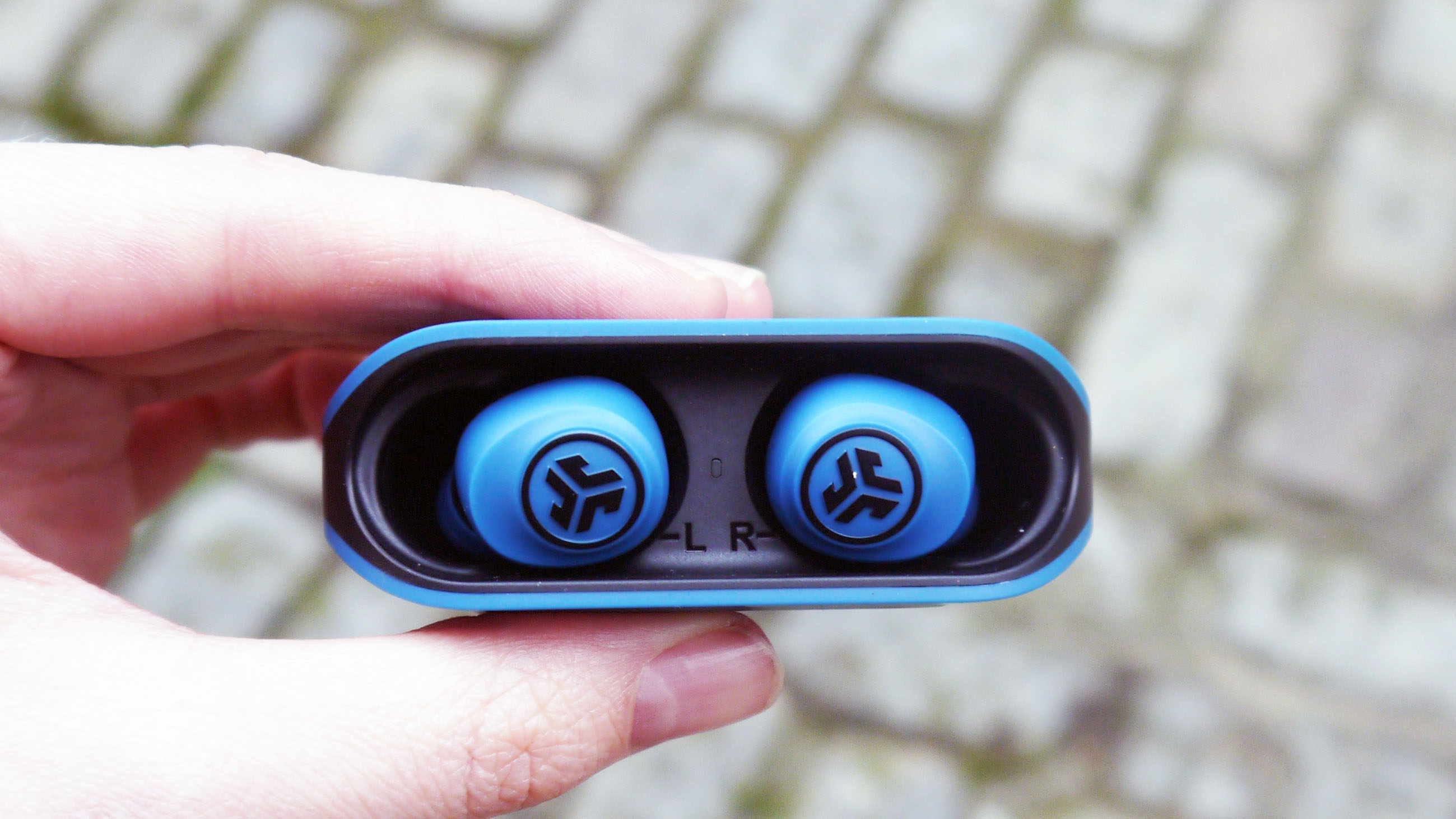
Final verdict
The big takeaway from a few days with the JLab Go Air True Wireless Earbuds is that, as we've already suggested, you get what you pay for. These are by no means suitable for audiophiles looking for fantastic sound, or gamers looking for low-latency Bluetooth connectivity – but we can’t ignore that extraordinarily low price.
The arrival of true wireless earbuds for under $30 / £30 means the once-expensive form factor is suddenly accessible to more people than ever before. Looking for a cheap pair of true wireless earbuds for your kids? The JLab Go Airs could be the way to go.
They could even make a good choice if you just want a spare pair of true wireless buds to stick in your bag, in case your best headphones run out of battery on the move, or if you want a budget-friendly pair to take camping or to a festival, so that you don’t have to worry about losing your prized Sony WH-1000XM3s.
If you really can’t abide the poor sound quality on offer here (and it is poor, make no mistake), but you like the sound of JLab’s low prices, you could check out the JBuds Air Executive – at $69 (about £55 / AU$100) they’re a bit pricier, but they offer better sound and better battery life.
Better yet, the Lypertek Tevi true wireless buds cost £99 (about $130 / AU$140), and are nearly faultless for the price.
Olivia was previously TechRadar's Senior Editor - Home Entertainment, covering everything from headphones to TVs. Based in London, she's a popular music graduate who worked in the music industry before finding her calling in journalism. She's previously been interviewed on BBC Radio 5 Live on the subject of multi-room audio, chaired panel discussions on diversity in music festival lineups, and her bylines include T3, Stereoboard, What to Watch, Top Ten Reviews, Creative Bloq, and Croco Magazine. Olivia now has a career in PR.
